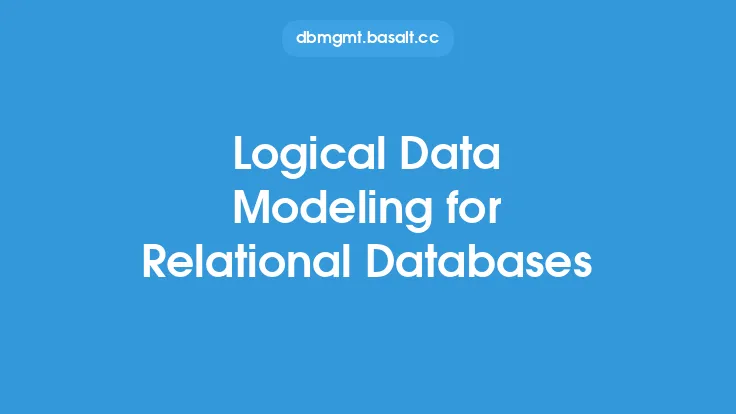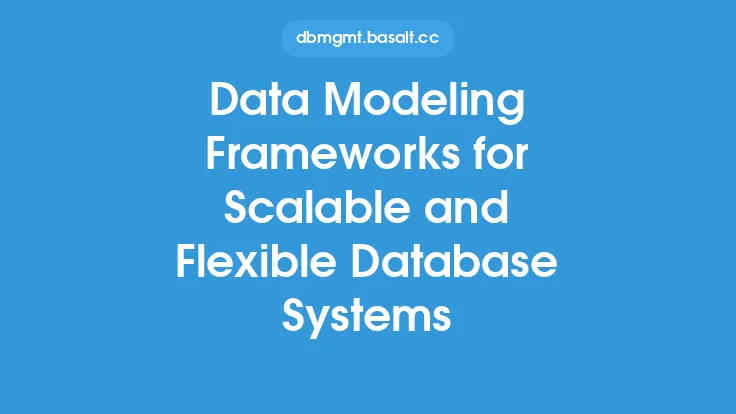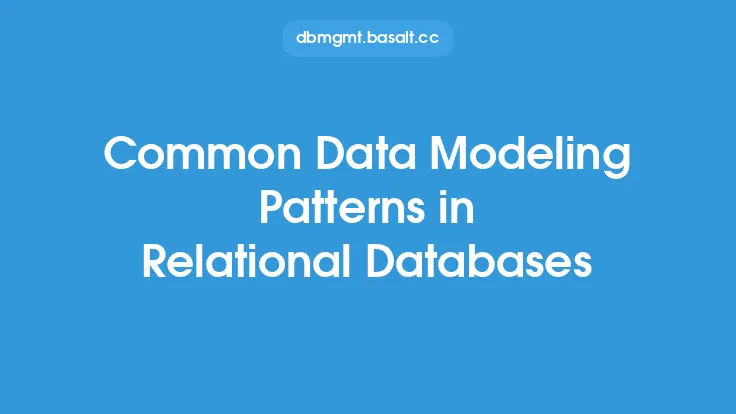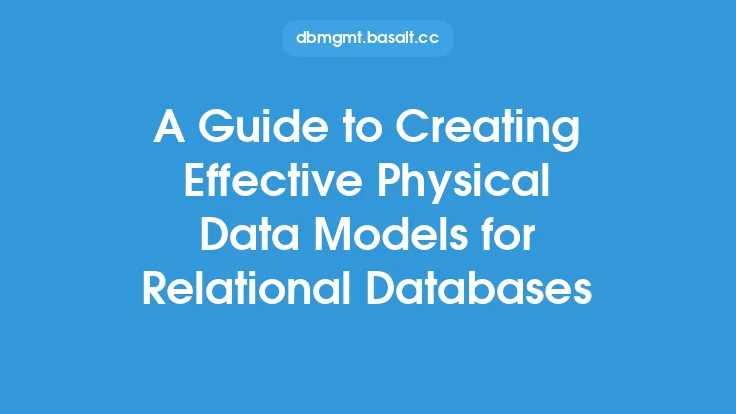Relational databases have been a cornerstone of data storage and management for decades, and their popularity endures due to their ability to efficiently store and manage large amounts of structured data. At the heart of designing and implementing relational databases lies data modeling, a process that involves creating a conceptual representation of the data to be stored. Data modeling frameworks for relational databases are essential tools that guide this process, ensuring that databases are designed to meet the needs of applications and users while maintaining data integrity and scalability.
Importance of Data Modeling Frameworks for Relational Databases
Data modeling frameworks are crucial for relational databases because they provide a structured approach to designing databases. These frameworks help in creating a clear, concise, and understandable model of the data, which is essential for communicating with stakeholders, including developers, users, and database administrators. By using a data modeling framework, designers can ensure that the database structure is logical, consistent, and supports the requirements of the application or system it serves. This, in turn, leads to better data integrity, reduced data redundancy, and improved data scalability.
Key Components of Data Modeling Frameworks
Data modeling frameworks for relational databases typically consist of several key components, including entity-relationship diagrams (ERDs), relational models, and data normalization rules. Entity-relationship diagrams are visual representations of the entities and their relationships, providing a clear overview of how different pieces of data interact. The relational model defines how data is organized into tables (relations) and how these tables are related to each other. Data normalization rules are applied to minimize data redundancy and dependency, ensuring that each piece of data is stored in one place and one place only.
Entity-Relationship Modeling
Entity-relationship modeling is a fundamental aspect of data modeling frameworks for relational databases. It involves identifying entities (which can be objects, concepts, or events), attributes (characteristics of entities), and relationships (how entities interact with each other). Entities are typically represented as tables in the relational database, with attributes becoming columns within those tables. Relationships between entities are established through keys, which can be primary keys (uniquely identifying each row in a table) or foreign keys (linking rows in different tables).
Relational Modeling
Relational modeling takes the conceptual model developed through entity-relationship modeling and translates it into a relational database design. This involves defining the structure of each table, including the data types of columns, and establishing relationships between tables. A well-designed relational model ensures that data is properly organized, making it easier to manage, query, and maintain. It also plays a critical role in supporting the performance and scalability of the database.
Data Normalization
Data normalization is a critical step in the data modeling process for relational databases. It involves organizing the data in the database to minimize data redundancy and dependency. Normalization rules, such as First Normal Form (1NF), Second Normal Form (2NF), and Third Normal Form (3NF), are applied to ensure that each table has a unique set of attributes and that data is not duplicated. Normalization helps in reducing data anomalies and improving data integrity, making it easier to maintain and update the database over time.
Data Denormalization
While data normalization is essential for maintaining data integrity, there are scenarios where data denormalization might be necessary for improving database performance. Denormalization involves intentionally violating the principles of normalization to reduce the number of joins required in queries, thereby improving query performance. However, denormalization should be approached with caution, as it can lead to data inconsistencies and make database maintenance more challenging.
Tools and Technologies for Data Modeling
Several tools and technologies are available to support data modeling for relational databases. These range from graphical tools like Entity-Relationship Diagram (ERD) editors, which allow designers to visually create and edit database models, to command-line tools and programming libraries that support the creation and manipulation of database schemas. Popular data modeling tools include MySQL Workbench, Oracle Data Modeler, and Microsoft Visio, among others. Each of these tools offers a unique set of features that can aid in the design, development, and documentation of relational databases.
Best Practices for Implementing Data Modeling Frameworks
Implementing a data modeling framework for a relational database requires careful planning and adherence to best practices. This includes thoroughly understanding the requirements of the application or system, involving stakeholders in the design process, and iteratively refining the model based on feedback and testing. Additionally, designers should stay up-to-date with the latest trends and technologies in data modeling and relational databases, ensuring that the database is designed to be scalable, flexible, and performant.
Conclusion
Data modeling frameworks are indispensable for the design and implementation of relational databases, offering a structured approach to creating databases that are efficient, scalable, and maintainable. By understanding the importance of data modeling, the key components of data modeling frameworks, and best practices for implementation, designers and developers can create relational databases that meet the needs of modern applications and systems. As technology continues to evolve, the principles and practices of data modeling for relational databases will remain a cornerstone of database design, ensuring that data is managed effectively and efficiently.





